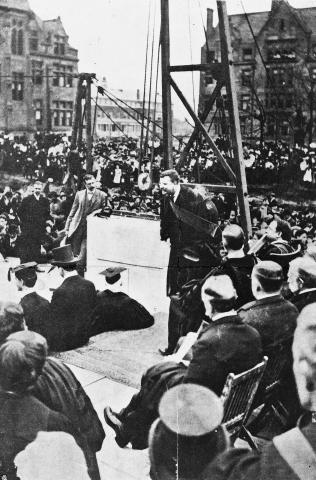History of the Law School
The University of Chicago, one of the youngest of the major American universities, was granted its charter in 1890 and opened its doors for classes in October 1892. The generosity of its founding donors, led by John D. Rockefeller, enabled the first president of the University, William Rainey Harper, to realize his bold ideas and extraordinary standards in the creation of a new university. Harper insisted that the new institution must be a true university, with a strong emphasis on advanced training and research, as well as undergraduate education.
The Law School, part of Harper's original plan but delayed in fulfillment until 1902, was a product of an innovative spirit and a devotion to intellectual inquiry. The objective, in the view of Harper and faculty members associated with him in the project, was to create a new kind of law school, professional in its purpose, but with a broader outlook than was then prevalent in the leading American law schools. The aspiration of the new school was set by Harper's conception of legal education in a university setting: education in law "implies a scientific knowledge of law and of legal and juristic methods. These are the crystallization of ages of human progress. They cannot be understood in their entirety without a clear comprehension of the historic forces of which they are the product, and of the social environment with which they are in living contact. A scientific study of law involves the related sciences of history, economics, philosophy - the whole field of man as social being."
This animating philosophy has resulted in the Law School playing a leading role in legal education since its founding. UChicago Law was pivotal in almost all of the innovations made in legal education during the last century: the recognition of administrative law, legislation, and comparative law as legitimate fields of law study; the introduction of other disciplines into the law school curriculum and the appointment of faculty outside the law; the extension of the field of legal research from concern with the rules of the law to empirically oriented investigations of the legal system; and the broadening of the curriculum to include clinical as well as academic offerings.
For more on the history of the Law School , please visit the archival web page for our Centennial, celebrated in 2002-03. You may also be interested in this slideshow documenting the opening of our building's cornerstone in 2009.
